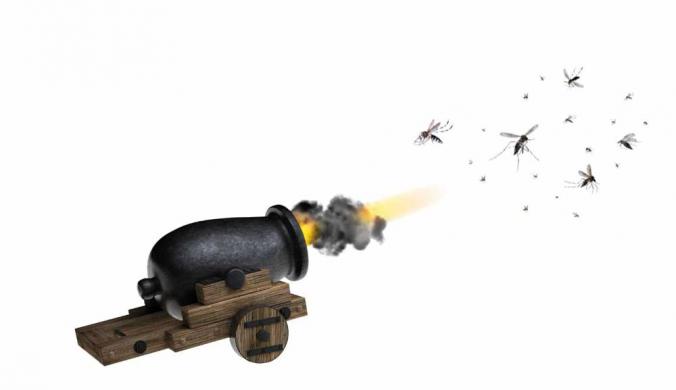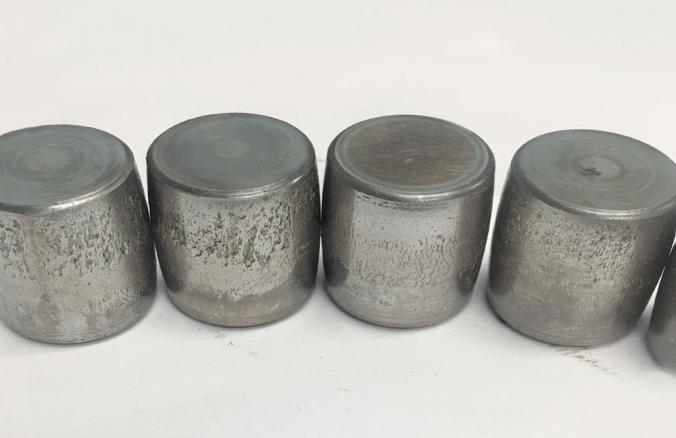It’s About “Time”
At Bentley Systems, we have been talking to our users, especially owners, and it has become clear that despite our collective best efforts, there is a gap in the market. Owners need easy access to real-time, accurate, engineering information and they need tools that make it simple to keep engineering data up-to-date, especially those engaged in brownfield and revamp projects. It takes too much time and effort to gather and verify the information they need to make decisions effectively. And for older plants that do not have 3D models, there is simply no visual way to verify and check information easily.

At Bentley Systems, we have been talking to our users, especially owners, and it has become clear that despite our collective best efforts, there is a gap in the market. Owners need easy access to real-time, accurate, engineering information and they need tools that make it simple to keep engineering data up-to-date, especially those engaged in brownfield and revamp projects. It takes too much time and effort to gather and verify the information they need to make decisions effectively. And for older plants that do not have 3D models, there is simply no visual way to verify and check information easily.
Working closely together over the last several years, Siemens and Bentley have integrated Siemens’ COMOS system and Bentley’s OpenPlant 3D plant design solutions to address integration between P&ID’s and 3D models for design workflows using iModels. iModels help users share models and information for projects associated with the lifecycle of infrastructure assets, insuring that information flows easily, completely, and accurately between and within design, construction, and operations environments.
However, better integration between P&IDs and 3D models, whilst improving the quality and accuracy of engineering data only tackles a small portion of the problem. So, over the past two years, Bentley and Siemens developed a vision for an open, cloud-based solution that will deliver a collection of microservices including process and plant engineering, physical layout modeling, project, and construction planning, maintenance, and asset performance modeling. This vision also encompassed supporting federation of data from underlying services and related applications, so that each data point is stored only once. The solution will provide means to access traditionally inaccessible data, through intelligent scanning and interpretation. Services to validate data and link it to other information, combined with traceability of changes to improve the degree of accuracy, completeness, and trustworthiness of asset data and documentation, improve compliance and the quality of decision making. The solution is scalable, secure, and extendable and will reduce IT footprint and cost.
Introducing PlantSight
PlantSight is a cloud-based plant engineering, and operations solution that scales from the simplest plant modification workflows to those required for complex capital projects. The solution shares a common data model across a connected data environment (CDE) which integrates services delivered from both Siemens and Bentley.
Services include data acquisition that can load plant design information from not only COMOS and OpenPlant, but also from AVEVA and Hexagon, data aggregation services to consolidate and aggregate data into the CDE and ensure that all data is correctly synchronized, a tag registry service that manages tags across all these multiple systems. Tags are used to identify assets and are typically the common denominator between different engineering and operations systems. They are also one of the hardest things to consolidate and keep updated across these systems.
With Siemens expertise in functional information and Bentley’s expertise in 3D spatial information, PlantSight solves this problem. In addition to aggregating data from plant design systems, it can also aggregate data from Excel, ISO 15926 and other data sources, giving the operator instant access to accurate tag information. The PlantSight tag registry is also integrated directly with COMOS and OpenPlant, so they share this capability with design workflows. We see other PlantSight services being similarly shared as user requirements demand.
And if there is no 3D model of the existing plant? PlantSight can also combine a reality mesh of an existing plant, together with any 3D models that may be available, and link tag information to the geospatial coordinates of that tagged component.
The solution will facilitate the construction of digital twins as a federation of data from many online and off-line sources and require very little IT integration. It would help incorporate data from digitally inaccessible sources, sometimes referred to as “dark data,” and mobile sources used in the field.
An accurate, up-to-date, accessible digital twin reduces time to operational readiness and can influence time-to-market. The ease with which this twin can be updated during operation or modified during projects supports the need for increased flexibility and adaptability. The seamless and on-going integration of process engineering, maintenance, 3D representation, and operational performance information, speeds up and supports continuous improvement and thereby efficiency, sustainability and return on assets. Owner-operators can combine the solution with asset management best practices to improve useful life and asset value, such as Bentley’s AssetWise ALM solution. The digital twin makes it easier to engineer for safety and compliance and verify the as-built and as-maintained facility.
In addition to information accessible on-line, there is a category of inaccessible sources, such as PDF documents, drawings or paper documents, and electronic data in legacy systems that can benefit a broader set of users, when made available. PlantSight will include intelligent services to help incorporate, analyze and connect data from these sources, also called “dark data.” Functionalities to access this data would include smart scanning to interpret schematics and drawings, reading from instrumentation and equipment lists, and linking diagrams with data objects describing the physical objects. Other software components would help extract locked data, making it available to those who may need it. As the data quality may be inconsistent, validation steps will allow the differentiation of useful data from poor data. Upon validation, the data can be linked to plant and data objects. In addition, the solution provides the possibility to add untagged plant information in the field on a mobile device.
What about change?
For operators, one of the biggest challenges is knowing what changed, when it changed and what specifically are the differentials that could affect operational assets? Not just the most recent change, it’s every change – historically on record. Operators want to be able to visualize these changes in 3D, quickly highlight tagged items that have changed, and be able to dive into the details and see exactly what information was modified. P&IDs are probably one of the most important operational documents, so how about if you can view those same changes we saw in 3D visualized on the P&ID? Visualizing changes using the context of a familiar document adds real value to operators. Let’s not forget about operators in the field. So how do we capture changes from the field in the first place?
Keep it simple
And what about sketching new components like valves or pumps, or adding a comment and having it automatically associated with the correct tagged items? How about indicating removal of tags with a simple strike through? Siemens and Bentley have already integrated changes that are initiated within PlantSight and directly communicated back to COMOS and OpenPlant to close the loop and simplify the entire change process end-to-end.
Valentijn de Leeuw, Vice President ARC Advisory Group, recently commented: “Siemens’ and Bentley’s newly-developed PlantSight services will establish a foundation for next-generation asset information and performance management. For as-operated digital twins, this augments the actual plant by integrating operational data with operational intelligence dashboards, immersive operator training simulation, and links with applications such as process simulation, asset strategy, and reliability.”
In summary, PlantSight closes a gap in the marketplace for plant operations and maintenance. It is a new solution that works with existing systems, leverages new technologies such as reality modeling, 3D web-based visualization, cloud-services, and IoT to consolidate and aggregate information and support constant and continuous change management. Plant operators can now quickly and accurately create and manage “as-operated” digital twins of their assets. And it’s about time.
According to a paper published by ARC Advisory Services in June 20181:
“The financial crisis of 2007-2008 and the recent drop in oil prices that led to significant reductions in demand and asset utilization, has created the awareness that large-scale and single-purpose assets can have important drawbacks when markets are highly volatile. The resulting pressure to increase efficiency and return on assets requires shorter times to operational readiness and greater flexibility in operating and modifying assets to follow market demand. In practical terms:
For plants under construction by engineering procurement and construction firms (EPC’s), owner-operators (OO’s) require tighter collaboration than before. Examples of these requirements are electronic design reviews and tracking of construction and commissioning progress against electronic documents and 3D surveys.
- The asset information built up during engineering and construction is often incomplete or outdated at the moment of transfer. NIST estimates the cost of information losses during handover to be 1.8% of capital expenditures. There is a huge opportunity to enhance the process by improving change management to ensure the data is accurate and information is reused.
- When engineering or maintenance trouble shoot an operational issue or need to start a modification project, they lose precious time when trying to determine the status and performance of the asset before starting their actual work because often, the asset information is missing or inaccurate. Functional, operational and 3D spatial information – for the plant, building, or both - are often not available side by side and are often inconsistent. Furthermore, time is often lost due to inaccurate information on spare parts. NIST estimates the cost of information losses in the operate-maintain phases of the asset to be 2.4% of the capital expenditure cost. Complete, accessible, and accurate asset information has the potential to shorten project duration and “mean time to repair” (MTTR), and to lower operational and capital expenditures.
- High reliability is required for the best return on assets and process safety. Reliability-centered maintenance methodologies are well advanced and remote equipment monitoring is available. To be efficient, reliability engineers need seamless access to all asset information.
- As regulatory requirements tighten, compliance costs increase. In some cases, compliance becomes impossible as accurate information cannot be produced at any point in time. The efficiency of compliance processes must be improved using electronic design and requirement documentation, with electronic sign-offs.
- In the foreseeable future, modular production plants will be built that are easier to modify and use more energy and material efficient process technologies. Initial use in pilot installations will gradually be extended to industrial production. This will further increase the pressure on flexibility and efficiency for fast-track engineering as well as on operation and requirements for a digital twin.”
1. “Bentley’s and Siemens’ Vision for Cloud-based Distributed Engineering and Operations” by ARC Advisory Group, June 2018










